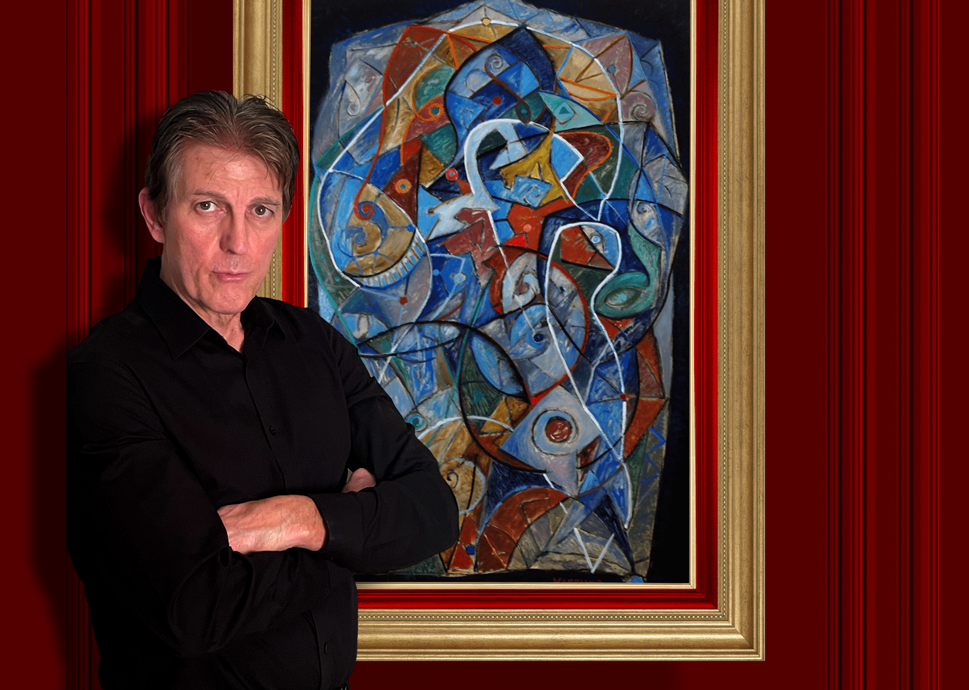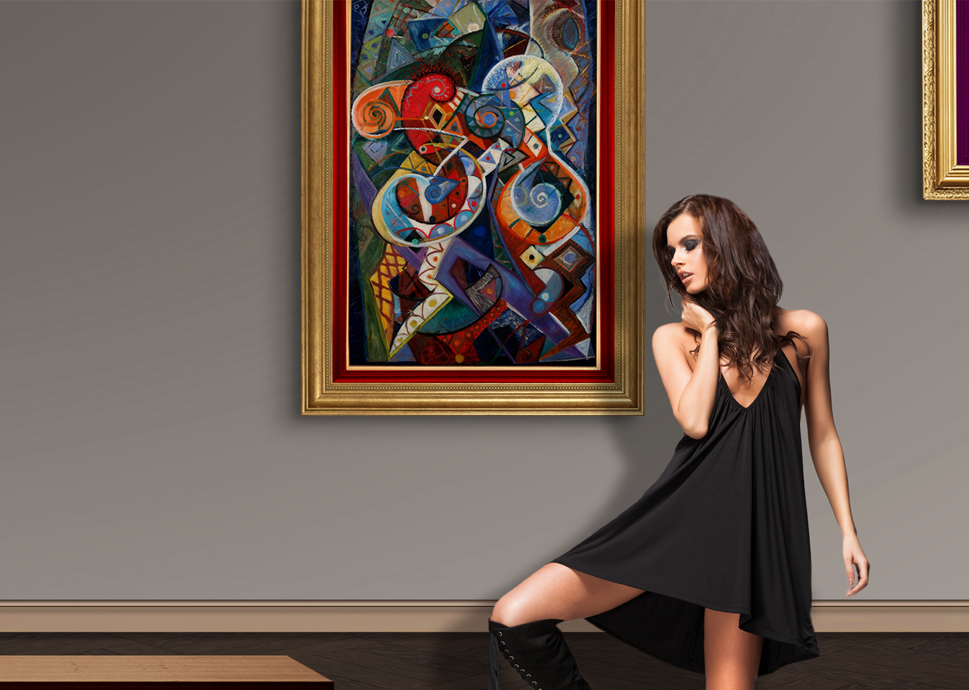Essay
Essay
Varriano Brings Us War and Dance in This Evocative Display of His Abstract Figuratism
By: Maria Loredan Avington
John Varriano American Artist, "Gods and Titans," 2024, oil on canvas, 30' x 30'
Gods and Titans
This complex masterpiece highlights John Varriano’s fluency in mechanics, anatomy, and choreography with twenty-two divinely proportioned, interlocking figures engaged in an eternal thrusting and pulling of physical and mental power and might. The figures move as we imagine gods and Titans would, with willful energy, acrobatic agility, and animated strength.
Dominating the center of the canvas and appearing to initiate and support the action are two figures with humanlike characteristics. One, painted in a vibrant persimmon with his back to us, the other, worked in a rich terracotta and flaming red, facing forward, are among the gods. Differentiated by their more abstract faces are the Titans. One Titan, directly above, painted in burnt sienna, wields a sword; another, rendered in rich bronze, holds fire. Below, the defeated Titans lie on earth, and a warhorse tramples the vanquished foe, who, in the final stages of confrontation, will be cast into the abyss of Tartarus.
Varriano’s figures engage with one another in an electrifying, rhythmical fashion, revealing one of the more frightening psychological aspects of war. For some, battle is both dance and game, where the external manifestations of combat are supported and perpetuated by those most intimately involved.
Unmistakably classical in its theme, Varriano included several Hellenic references in the painting. We see the discus and shot ball, known to us from the early Olympics, the Ionic column of Greco-Roman antiquity, and the wonderfully proportioned amphora vase. Another layer of symbolism is the subtle intimations of the elements nestled within the structure of the work. Fire in the hand of the bronze Titan, the air in the hollowed-out face of the viridian Titan, water represented by the inverted blue-grey amphora, and earth by the soil below.
Varriano used warm and cool tones, mixing the palette of primitive pigments with modern iterations of color. He applied the paint flatly, as it would have been painted on ancient pottery, giving the canvas the impression of being long buried and recently uncovered.
Varriano Brings Us War and Dance in This Evocative Display of His Abstract Figuratism
By: Maria Loredan Avington
John Varriano American Artist, "Gods and Titans," 2024, oil on canvas, 30' x 30'
Gods and Titans
This complex masterpiece highlights John Varriano’s fluency in mechanics, anatomy, and choreography with twenty-two divinely proportioned, interlocking figures engaged in an eternal thrusting and pulling of physical and mental power and might. The figures move as we imagine gods and Titans would, with willful energy, acrobatic agility, and animated strength.
Dominating the center of the canvas and appearing to initiate and support the action are two figures with humanlike characteristics. One, painted in a vibrant persimmon with his back to us, the other, worked in a rich terracotta and flaming red, facing forward, are among the gods. Differentiated by their more abstract faces are the Titans. One Titan, directly above, painted in burnt sienna, wields a sword; another, rendered in rich bronze, holds fire. Below, the defeated Titans lie on earth, and a warhorse tramples the vanquished foe, who, in the final stages of confrontation, will be cast into the abyss of Tartarus.
Varriano’s figures engage with one another in an electrifying, rhythmical fashion, revealing one of the more frightening psychological aspects of war. For some, battle is both dance and game, where the external manifestations of combat are supported and perpetuated by those most intimately involved.
Unmistakably classical in its theme, Varriano included several Hellenic references in the painting. We see the discus and shot ball, known to us from the early Olympics, the Ionic column of Greco-Roman antiquity, and the wonderfully proportioned amphora vase. Another layer of symbolism is the subtle intimations of the elements nestled within the structure of the work. Fire in the hand of the bronze Titan, the air in the hollowed-out face of the viridian Titan, water represented by the inverted blue-grey amphora, and earth by the soil below.
Varriano used warm and cool tones, mixing the palette of primitive pigments with modern iterations of color. He applied the paint flatly, as it would have been painted on ancient pottery, giving the canvas the impression of being long buried and recently uncovered.





